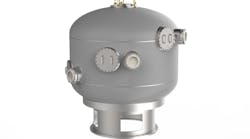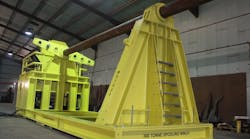Editor's note: This article first appeared in the 2023 Executive Perspectives Special Report, which published within the November/December 2023 issue of Offshore magazine.
By Jon Bell, MODS; and Alex Robertson, Petrofac
Despite digitalization’s promise to bring greater productivity and profitability to the oil and gas industry, cumbersome paper-based processes continue to dominate day-to-day activities. According to Offshore Energies UK, it is chiefly human apathy that is hindering a digital evolution and leaving the sector lagging.
To overcome challenges associated with the uptake of new digital solutions, Petrofac and MODS deployed the ADKAR change management tool. The model, which is based on the fundamental idea that organizational change is dependent on individual transformation, was applied when introducing Advanced Work Packaging (AWP) technology across 28 EPC brownfield project sites in the UK Continental Shelf. Each had successfully achieved varying levels of digitalization over a three-year period.
The ADKAR model is a five-step, continuous improvement process that encourages a human’s predilection for change in tandem with the introduction of any technology. For ADKAR to advance fully over five stages, all impacted parties must be active and willing participants.
Forging a desire to digitize
From the introduction through the implementation of the cloud-based software, the ADKAR model enabled the digital partners to understand the enthusiasm levels of users across the business hierarchy to embrace the digital makeover. The study began by introducing digital solutions to four key brownfield project execution workflows: work packages, materials management, completions and reporting.
Two case studies illustrated the contrasting extremes of the adoption spectrum to clearly demonstrate that human resolve is at least as influential to the successful uptake and scalability as the merits of the technology itself.
While it was clear that AWP software could significantly improve brownfield construction efficiency, the senior team and middle management involved in the first case study held opposing attitudes toward digitalizing workflows on their assets. Though senior decision-makers understood and had a desire to realize the benefits, several project delivery personnel were reluctant to embrace an upheaval in their existing ways of working. This aversion reverberated across the business, which led to more inefficiencies being created and deeper disapproval toward the digital tool. Therefore, manual/paper processing continued.
Unlike the first case study, the second investigation brought personnel from both groups together to deliberate and cultivate a unified desire for the transition from manual to digital processes. Reinforcement, the final stage of the ADKAR process was achieved. The client was then fully onboard to invest in the totality of the solution to optimize ROI. Overall, 10 modifications were made to the AWP software to maximize the user interface and experience. These user-initiated changes enabled a continual learning loop that endorsed technology adoption and ROI across the 28 brownfield sites.
Accelerating digitalization
Approximately 25% of digital transformation efforts achieve success due to hurdles related to managerial backing, well-defined attainable goals and transparent communication. These difficulties are exacerbated by the inherent characteristics of brownfield assets, which can restrict onsite techniques, systems and procedures. In the absence of predictable project execution, current AWP solutions encounter challenges in successful adoption and implementation in brownfield contexts. Moreover, when integrating historical installation and construction data with state-of-the-art technologies, the absence of motivated and upskilled users can make an otherwise robust and powerful solution appear fragmented.
Although the second case study was deemed successful, it is crucial to recognize that effectively steering change is an ongoing process. In fact, the "reinforcement" stage will cyclically return to "awareness," establishing a positive feedback loop centered on continuous enhancement of new digital systems and procedures. This iterative approach is how digital transformation can be expanded from a single asset or project to the de facto approach to a broader portfolio.
Closing the digital void
Nurturing and strengthening human want and will is the cornerstone of converting traditional practices to digital advances; it should not be underestimated or taken for granted. Without the appropriate incentives, motivation and support, garnering employee commitment becomes a formidable challenge. Consequently, adoption rates will remain low, and the ROI suffers.
Given the pivotal role of users in driving the adoption and scalability of technological advancements, it follows that a proven organizational change management model is indispensable for identifying and rectifying obstacles that hinder the seamless alignment of technology, people and processes.










